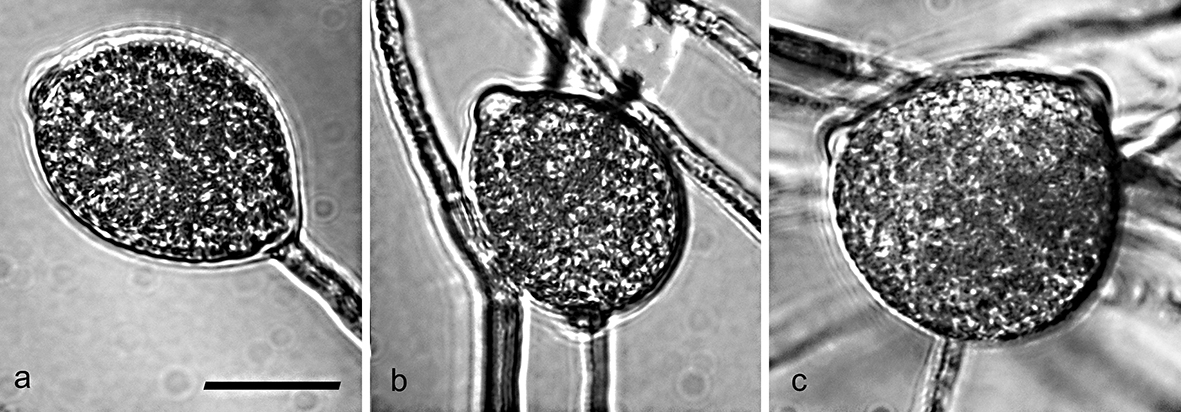Gallery
Image Type
Morphological Structure
Clades
 Kauri giant tree with symptoms of bleeding canker. The New Zealand expert holds in the left hand a piece of the cortex that will be replaced, in respect of indigenous Maori traditions. Kauri holds a very significant place in their creation mythology, with the iconic trees having their own names, for example Tane-mahuta “the God of the Forest”; photo by Gloria Abad, USDA-APHIS-PPQ.
Kauri giant tree with symptoms of bleeding canker. The New Zealand expert holds in the left hand a piece of the cortex that will be replaced, in respect of indigenous Maori traditions. Kauri holds a very significant place in their creation mythology, with the iconic trees having their own names, for example Tane-mahuta “the God of the Forest”; photo by Gloria Abad, USDA-APHIS-PPQ.
Kauri giant tree with symptoms of bleeding canker. The New Zealand expert holds in the left hand a piece of the cortex that will be replaced, in respect of indigenous Maori traditions. Kauri holds a very significant place in their creation mythology, with the iconic trees having their own names, for example Tane-mahuta “the God of the Forest”; photo by Gloria Abad, USDA-APHIS-PPQ.
 kauri ( Agathis australis ) giant tree with symptoms of bleeding canker; photo by Gloria Abad, USDA-APHIS-PPQ
kauri ( Agathis australis ) giant tree with symptoms of bleeding canker; photo by Gloria Abad, USDA-APHIS-PPQ
kauri (Agathis australis) giant tree with symptoms of bleeding canker; photo by Gloria Abad, USDA-APHIS-PPQ
 Kauri dieback, caused by Phytophthora agathidicida , is specific to New Zealand kauri and can kill trees of all ages; photo courtesy of Kauri Dieback Programme Partners, New Zealand.
Kauri dieback, caused by Phytophthora agathidicida , is specific to New Zealand kauri and can kill trees of all ages; photo courtesy of Kauri Dieback Programme Partners, New Zealand.
Kauri dieback, caused by Phytophthora agathidicida, is specific to New Zealand kauri and can kill trees of all ages; photo courtesy of Kauri Dieback Programme Partners, New Zealand.
 Taking action to prevent the spread of kauri dieback, caused by Phytophthora agathidicida ; photo courtesy of Kauri Dieback Programme Partners, New Zealand.
Taking action to prevent the spread of kauri dieback, caused by Phytophthora agathidicida ; photo courtesy of Kauri Dieback Programme Partners, New Zealand.
Taking action to prevent the spread of kauri dieback, caused by Phytophthora agathidicida; photo courtesy of Kauri Dieback Programme Partners, New Zealand.
Phytophthora spp. in Clade 5: portion of the seven-loci ML phylogeny featuring the type cultures of 212 described species (by T. Bourret). Notice the position of P. agathiidicida Ex-type CBS 149819 = S&T BL 154. Gloria Abad, USDA S&T.
Phytophthora spp. in Clade 5: Morphological Tabular key (PDF) and Tabular key legends (PDF) in IDphy2 KEY SECTION. Notice the data of P. agathiidicida Ex-type CBS 149819 = S&T BL 154. Gloria Abad, USDA S&T.
Phytophthora spp. in subclade 1a: portion of the seven-loci ML phylogeny featuring the type cultures of 212 described species (by T. Bourret). Notice the position of P. aleatoria Ex-type NZFS 4037. Gloria Abad, USDA S&T.
Phytophthora spp. in subclade 1a: Morphological Tabular key (PDF) and Tabular key legends (PDF) in IDphy2 KEY SECTION. Notice the data of P. aleatoria Ex-type NZFS 4037. Gloria Abad, USDA S&T.
colony morphology after 7 d growth at 20ºC on V8A, MEA, and PDA agar (from left to right)
persistent and caducous, papillate, predominantly ovoid and limoniform sporangia — scale bar = 20µm
 oogonia with smooth walls containing aplerotic oospores; antheridia can be both amphigynous and paragynous — scale bar = 20µm
oogonia with smooth walls containing aplerotic oospores; antheridia can be both amphigynous and paragynous — scale bar = 20µm
oogonia with smooth walls containing aplerotic oospores; antheridia can be both amphigynous and paragynous — scale bar = 20µm
 stem bleeding cankers associated with P. aleatoria on five-year-old Pinus radiata trees growing in Motueka Gorge, in the Nelson region; and b branch die-back with a canker on a two-year-old P. radiata tree in Nelson, associated with Phytophthora aleatoria
stem bleeding cankers associated with P. aleatoria on five-year-old Pinus radiata trees growing in Motueka Gorge, in the Nelson region; and b branch die-back with a canker on a two-year-old P. radiata tree in Nelson, associated with Phytophthora aleatoria
stem bleeding cankers associated with P. aleatoria on five-year-old Pinus radiata trees growing in Motueka Gorge, in the Nelson region; and b branch die-back with a canker on a two-year-old P. radiata tree in Nelson, associated with Phytophthora aleatoria
Phytophthora spp. in subclade 1a: portion of the seven-loci ML phylogeny featuring the type cultures of 212 described species (by T. Bourret). Notice the position of P. alpina Ex-type CBS 146801 = S&T BL 205. Gloria Abad, USDA S&T.
Phytophthora spp. in subclade 1a: Morphological Tabular key (PDF) and Tabular key legends (PDF) in IDphy2 KEY SECTION. Notice the data of P. alpina Ex-type CBS 146801 = S&T BL 205. Gloria Abad, USDA S&T.
Phytophthora spp. in Clade 4: portion of the seven-loci ML phylogeny featuring the type cultures of 212 described species (by T. Bourret). Notice the position of P. alticola Ex-neotype CBS 141718. Gloria Abad, USDA S&T.
Phytophthora spp. in Clade 4: Morphological Tabular key (PDF) and Tabular key legends (PDF) in IDphy2 KEY SECTION. Notice the data of P. alticola Ex-type CBS 141718. Gloria Abad, USDA S&T.
colony morphology after 7 days growth at 20ºC on CA, V8A, ½ PDA, and MEA (left to right)
oogonia with wavy margins and aplerotic oospores with paragynous antheridia, scale bar = 20 µm
 Phytophthora amaranthi (CPHST BL 174) colonies of the ex-type grown for 7 days on (a) V8® Agar, (b) potato dextrose agar, and (c) malt extract agar; photo by Krysta Jennings and Leandra Knight, USDA-APHIS-PPQ
Phytophthora amaranthi (CPHST BL 174) colonies of the ex-type grown for 7 days on (a) V8® Agar, (b) potato dextrose agar, and (c) malt extract agar; photo by Krysta Jennings and Leandra Knight, USDA-APHIS-PPQ
Phytophthora amaranthi (CPHST BL 174) colonies of the ex-type grown for 7 days on (a) V8® Agar, (b) potato dextrose agar, and (c) malt extract agar; photo by Krysta Jennings and Leandra Knight, USDA-APHIS-PPQ
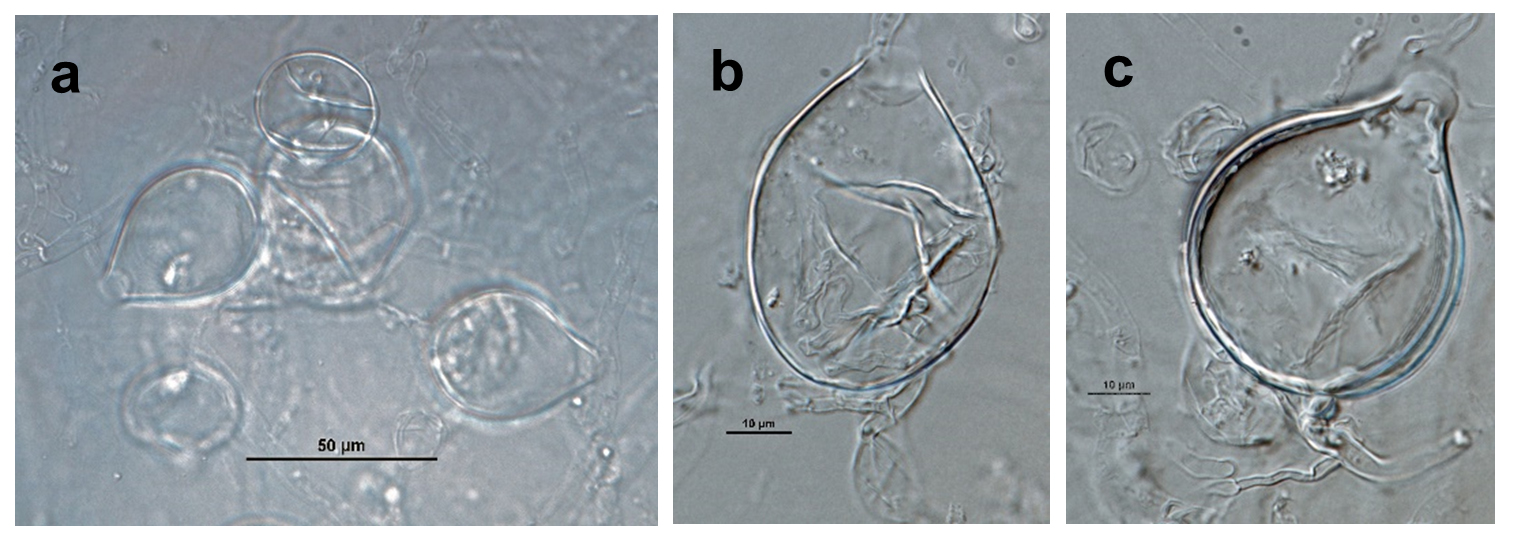 Phytophthora amaranthi (ex-type CPHST BL 174) asexual phase: (a-c) papillate and semipapillate sporangia; photos by Gloria Abad, USDA-APHIS-PPQ.
Phytophthora amaranthi (ex-type CPHST BL 174) asexual phase: (a-c) papillate and semipapillate sporangia; photos by Gloria Abad, USDA-APHIS-PPQ.
Phytophthora amaranthi (ex-type CPHST BL 174) asexual phase: (a-c) papillate and semipapillate sporangia; photos by Gloria Abad, USDA-APHIS-PPQ.
 Phytophthora amaranthi (ex-type CPHST BL 174) homothallic sexual phase: (a-e) smooth-walled oogonia with amphigynous antheridia and aplerotic oospores; photos by Gloria Abad, USDA-APHIS-PPQ.
Phytophthora amaranthi (ex-type CPHST BL 174) homothallic sexual phase: (a-e) smooth-walled oogonia with amphigynous antheridia and aplerotic oospores; photos by Gloria Abad, USDA-APHIS-PPQ.
Phytophthora amaranthi (ex-type CPHST BL 174) homothallic sexual phase: (a-e) smooth-walled oogonia with amphigynous antheridia and aplerotic oospores; photos by Gloria Abad, USDA-APHIS-PPQ.
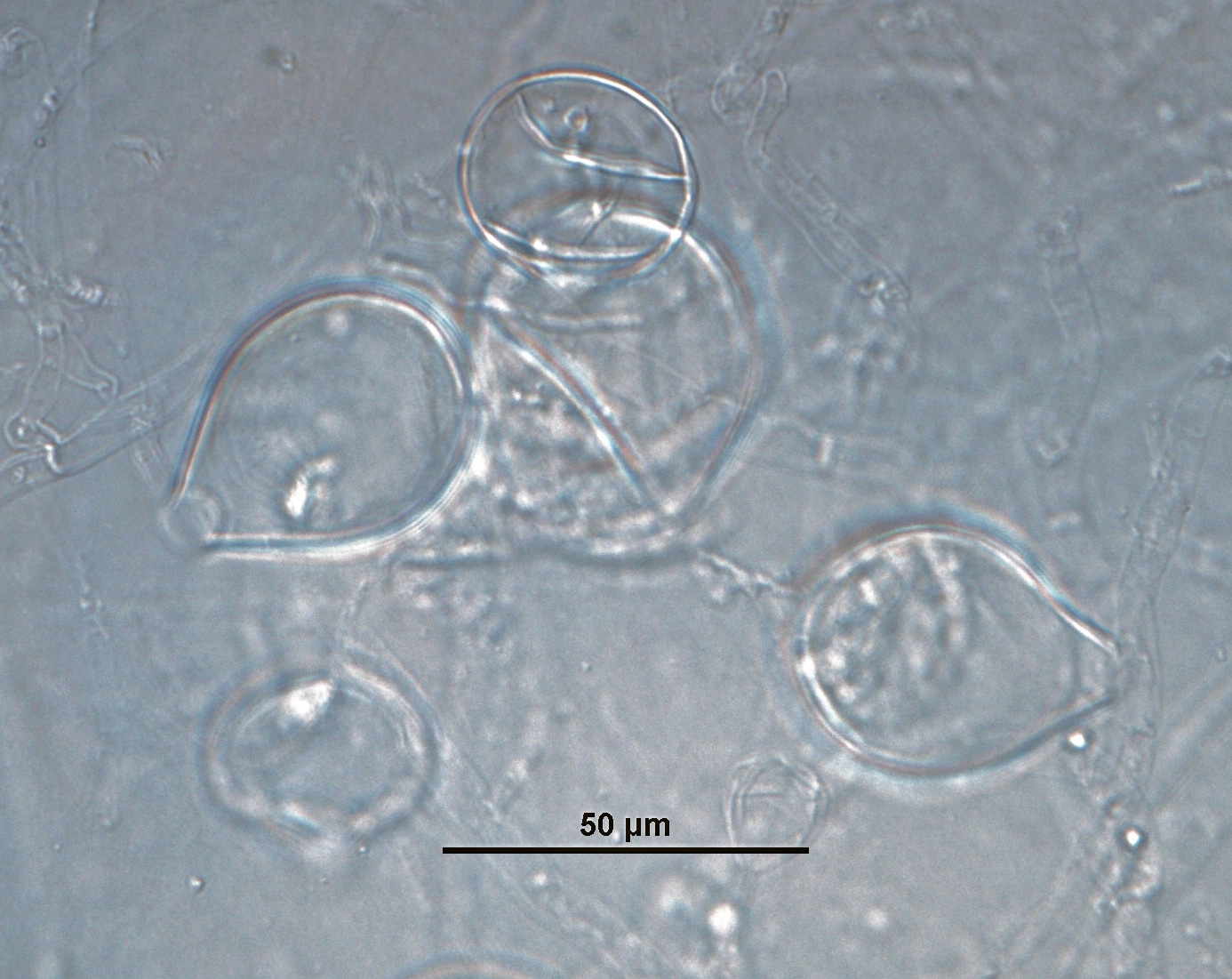 Phytophthora amaranthi (ex-type CPHST BL 174) asexual phase: papillate and semipapillate sporangia; photos by Gloria Abad, USDA-APHIS-PPQ.
Phytophthora amaranthi (ex-type CPHST BL 174) asexual phase: papillate and semipapillate sporangia; photos by Gloria Abad, USDA-APHIS-PPQ.
Phytophthora amaranthi (ex-type CPHST BL 174) asexual phase: papillate and semipapillate sporangia; photos by Gloria Abad, USDA-APHIS-PPQ.
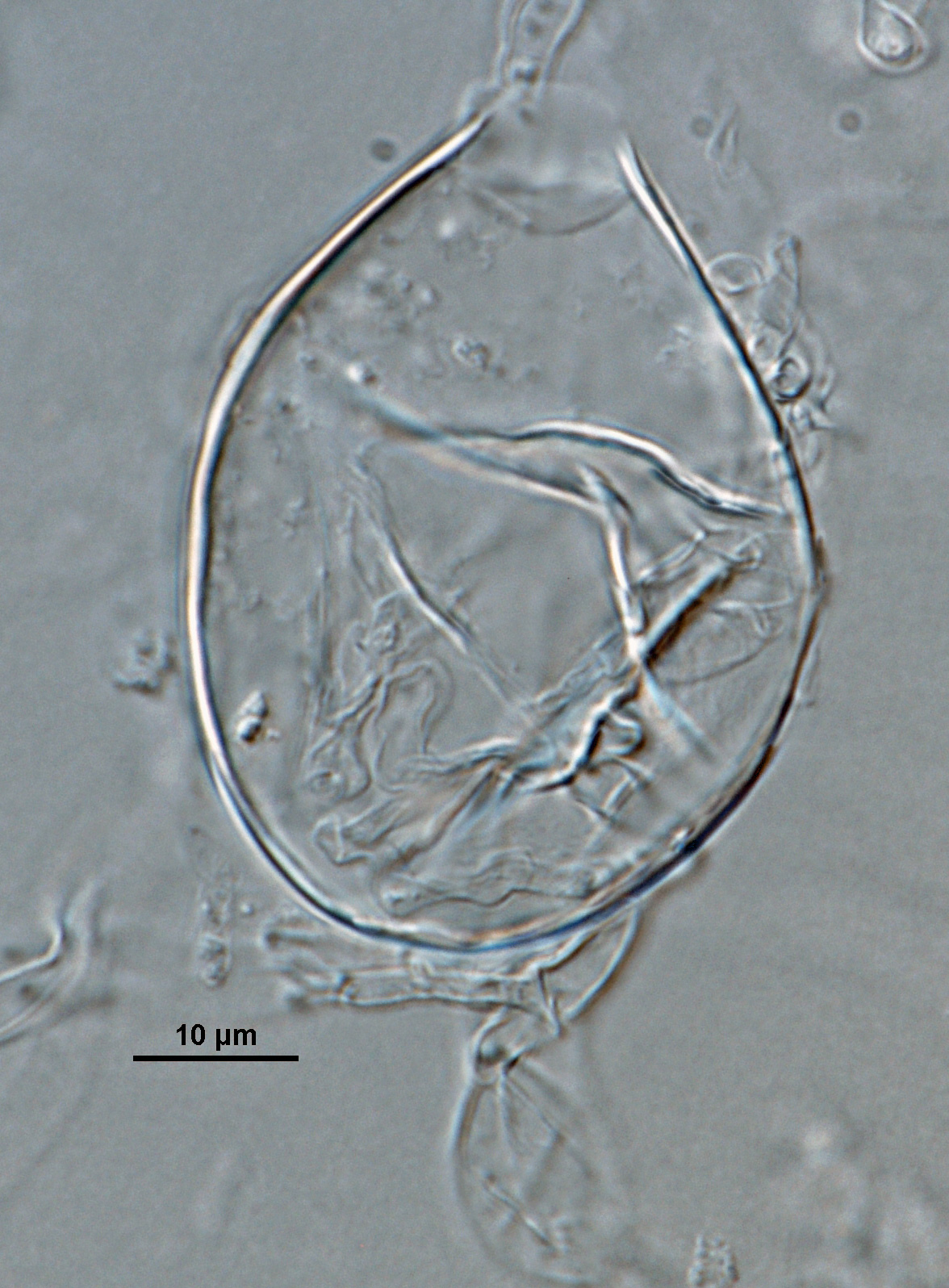 Phytophthora amaranthi (ex-type CPHST BL 174) asexual phase: papillate and semipapillate sporangium; photos by Gloria Abad, USDA-APHIS-PPQ.
Phytophthora amaranthi (ex-type CPHST BL 174) asexual phase: papillate and semipapillate sporangium; photos by Gloria Abad, USDA-APHIS-PPQ.
Phytophthora amaranthi (ex-type CPHST BL 174) asexual phase: papillate and semipapillate sporangium; photos by Gloria Abad, USDA-APHIS-PPQ.
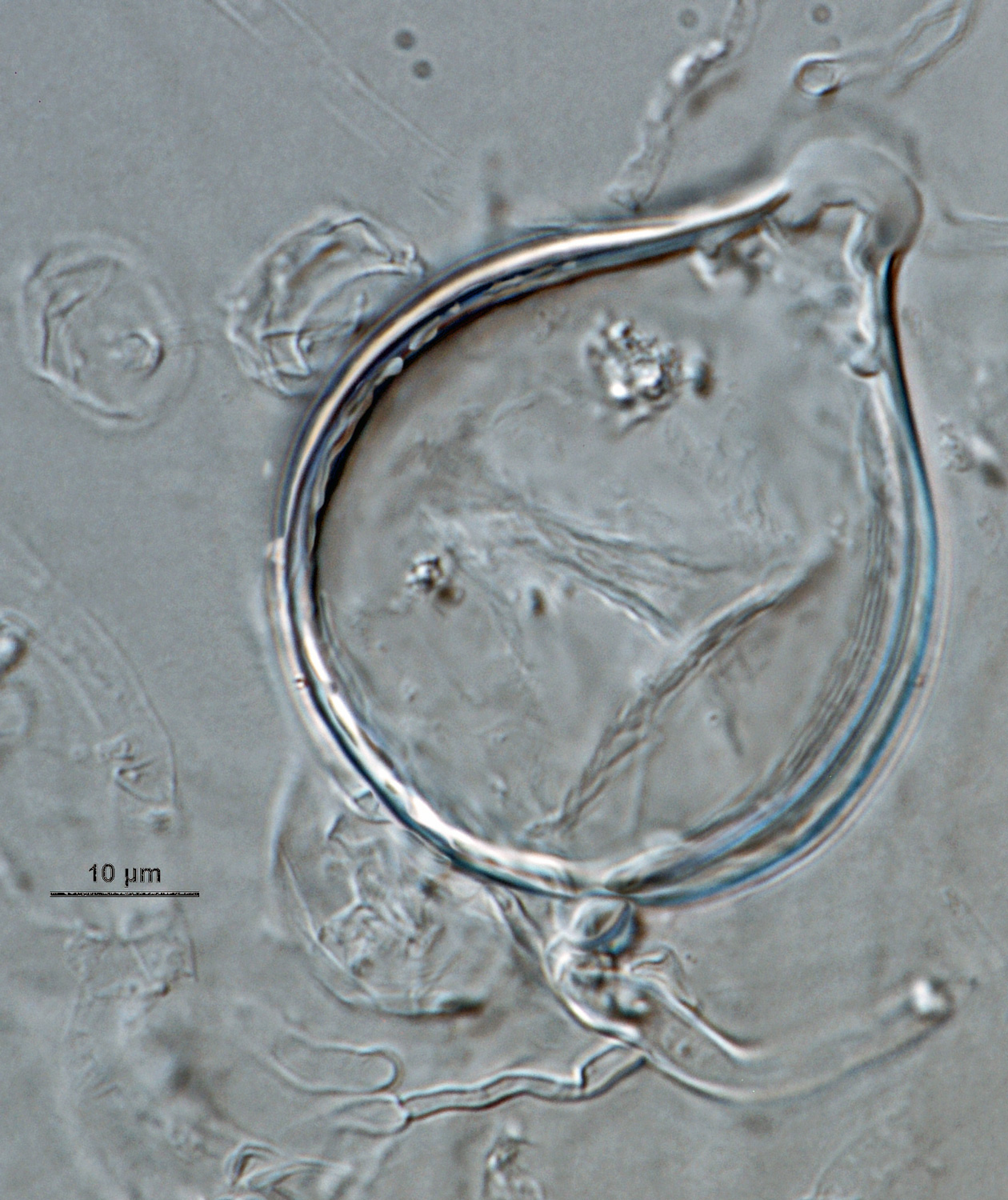 Phytophthora amaranthi (ex-type CPHST BL 174) asexual phase: papillate and semipapillate sporangium; photos by Gloria Abad, USDA-APHIS-PPQ.
Phytophthora amaranthi (ex-type CPHST BL 174) asexual phase: papillate and semipapillate sporangium; photos by Gloria Abad, USDA-APHIS-PPQ.
Phytophthora amaranthi (ex-type CPHST BL 174) asexual phase: papillate and semipapillate sporangium; photos by Gloria Abad, USDA-APHIS-PPQ.
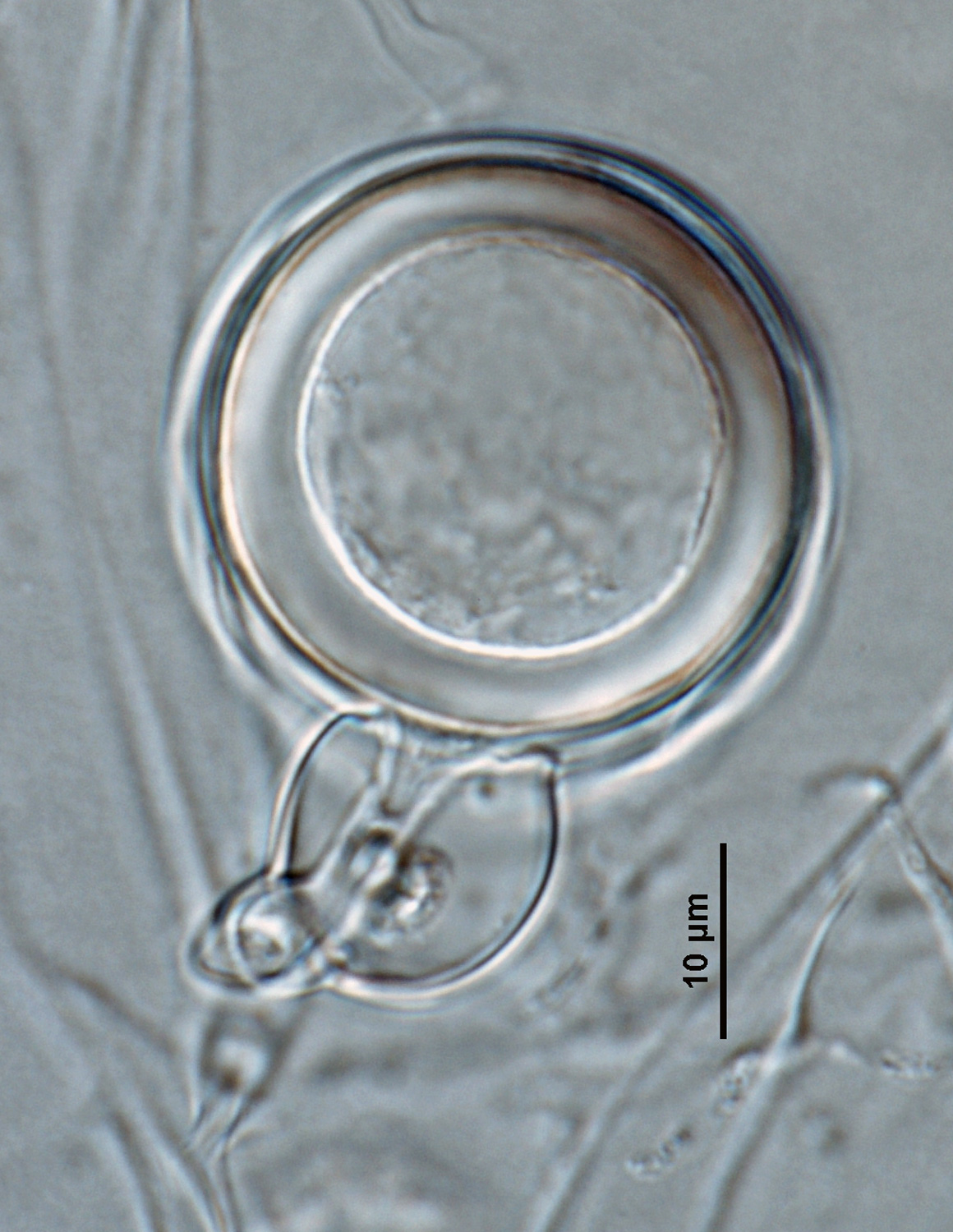 Phytophthora amaranthi (ex-type CPHST BL 174) homothallic sexual phase: smooth-walled oogonium with amphigynous antheridium and aplerotic oospore; photo by Gloria Abad, USDA-APHIS-PPQ.
Phytophthora amaranthi (ex-type CPHST BL 174) homothallic sexual phase: smooth-walled oogonium with amphigynous antheridium and aplerotic oospore; photo by Gloria Abad, USDA-APHIS-PPQ.
Phytophthora amaranthi (ex-type CPHST BL 174) homothallic sexual phase: smooth-walled oogonium with amphigynous antheridium and aplerotic oospore; photo by Gloria Abad, USDA-APHIS-PPQ.
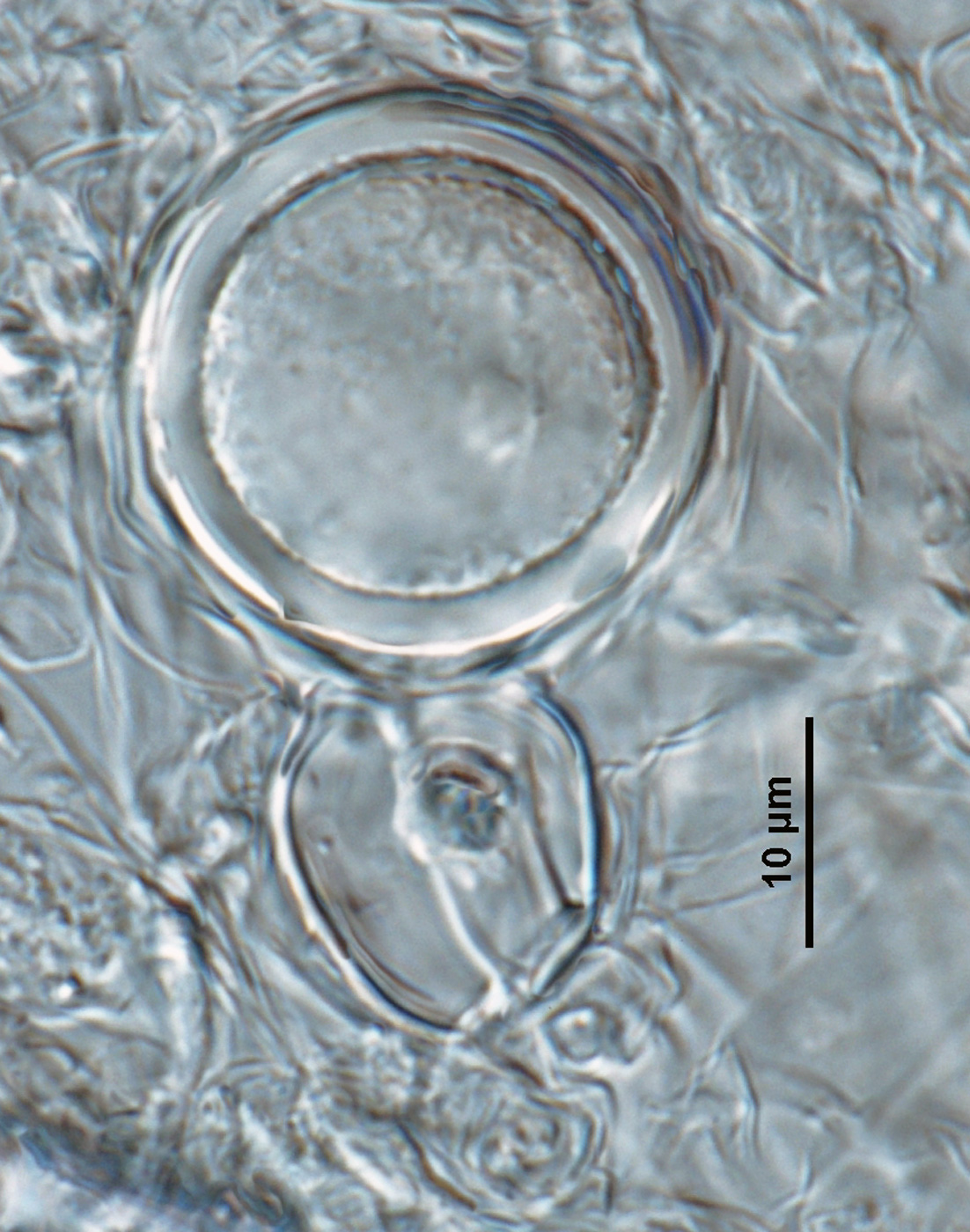 Phytophthora amaranthi (ex-type CPHST BL 174) homothallic sexual phase: smooth-walled oogonium with amphigynous antheridium and aplerotic oospore; photo by Gloria Abad, USDA-APHIS-PPQ.
Phytophthora amaranthi (ex-type CPHST BL 174) homothallic sexual phase: smooth-walled oogonium with amphigynous antheridium and aplerotic oospore; photo by Gloria Abad, USDA-APHIS-PPQ.
Phytophthora amaranthi (ex-type CPHST BL 174) homothallic sexual phase: smooth-walled oogonium with amphigynous antheridium and aplerotic oospore; photo by Gloria Abad, USDA-APHIS-PPQ.
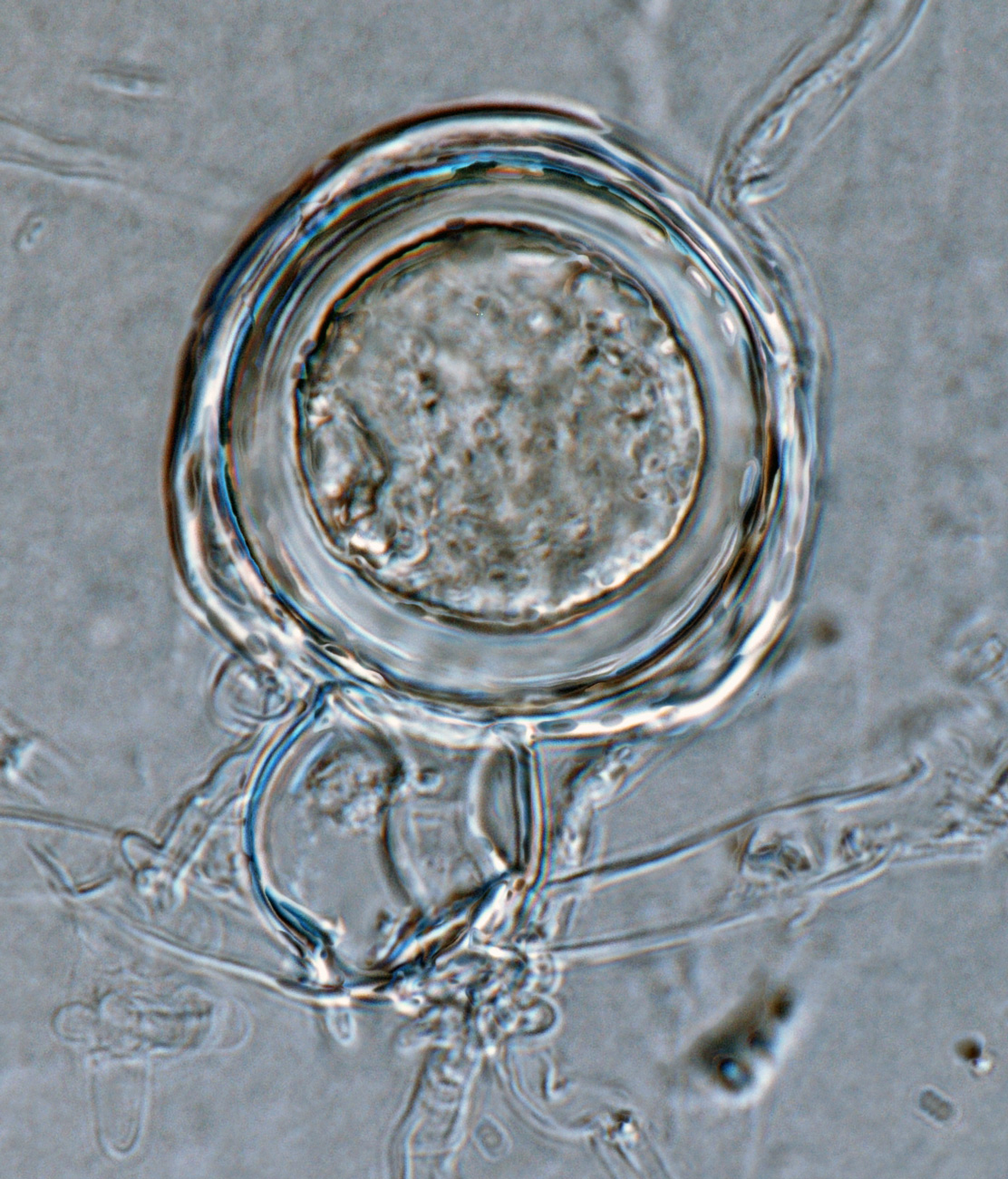 Phytophthora amaranthi (ex-type CPHST BL 174) homothallic sexual phase: smooth-walled oogonium with amphigynous antheridium and aplerotic oospore; photo by Gloria Abad, USDA-APHIS-PPQ.
Phytophthora amaranthi (ex-type CPHST BL 174) homothallic sexual phase: smooth-walled oogonium with amphigynous antheridium and aplerotic oospore; photo by Gloria Abad, USDA-APHIS-PPQ.
Phytophthora amaranthi (ex-type CPHST BL 174) homothallic sexual phase: smooth-walled oogonium with amphigynous antheridium and aplerotic oospore; photo by Gloria Abad, USDA-APHIS-PPQ.
 Phytophthora amaranthi (ex-type CPHST BL 174) homothallic sexual phase: smooth-walled oogonium with amphigynous antheridium and aplerotic oospore; photo by Gloria Abad, USDA-APHIS-PPQ.
Phytophthora amaranthi (ex-type CPHST BL 174) homothallic sexual phase: smooth-walled oogonium with amphigynous antheridium and aplerotic oospore; photo by Gloria Abad, USDA-APHIS-PPQ.
Phytophthora amaranthi (ex-type CPHST BL 174) homothallic sexual phase: smooth-walled oogonium with amphigynous antheridium and aplerotic oospore; photo by Gloria Abad, USDA-APHIS-PPQ.
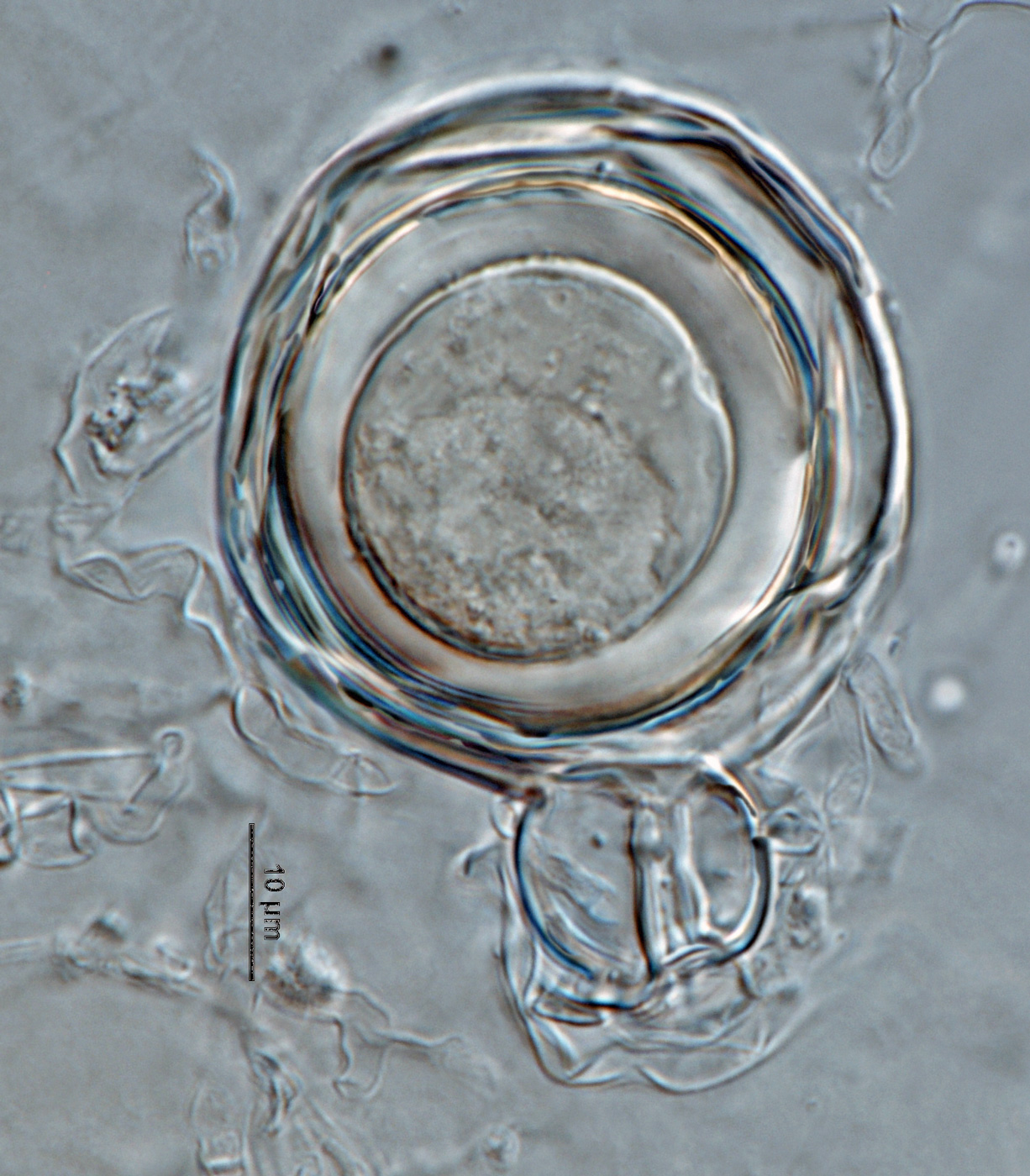 Phytophthora amaranthi (ex-type CPHST BL 174) homothallic sexual phase: smooth-walled oogonium with amphigynous antheridium and aplerotic oospore; photo by Gloria Abad, USDA-APHIS-PPQ.
Phytophthora amaranthi (ex-type CPHST BL 174) homothallic sexual phase: smooth-walled oogonium with amphigynous antheridium and aplerotic oospore; photo by Gloria Abad, USDA-APHIS-PPQ.
Phytophthora amaranthi (ex-type CPHST BL 174) homothallic sexual phase: smooth-walled oogonium with amphigynous antheridium and aplerotic oospore; photo by Gloria Abad, USDA-APHIS-PPQ.
Phytophthora spp. in subclade 2b: portion of the seven-loci ML phylogeny featuring the type cultures of 212 described species (by T. Bourret). Notice the position of P. amaranthi Ex-type CH30042 = S&T BL 174. Gloria Abad, USDA S&T.
Phytophthora spp. in subclade 2b: Morphological Tabular key (PDF) and Tabular key legends (PDF) in IDphy2 KEY SECTION. Notice the data of P. amaranthi Ex-type CH30042 = S&T BL 174. Gloria Abad, USDA S&T.




